Évitez que votre demande ne soit retardée, veuillez saisir votre WhatsApp/WeChat/Skype avec le message, afin que nous puissions vous contacter dans les plus brefs délais.
Nous vous répondrons dans les 24 heures. En cas d'urgence, veuillez ajouter WhatsApp : +86 17864107808, ou WeChat : +86 17864107808. Ou appelez +86 17864107808 directement.
*Nous respectons votre confidentialité et toutes les informations sont protégées. Nous n'utiliserons vos informations que pour répondre à votre demande et ne vous enverrons jamais de courriels ou de messages promotionnels non sollicités.
Are you wondering how UV flatbed printers work? These machines are game-changers in the printing industry, offering endless possibilities for printing on almost any surface.
UV flatbed printers use ultraviolet light to dry or cure ink instantly as it is printed. This unique feature allows them to print on a wide range of materials with precision.
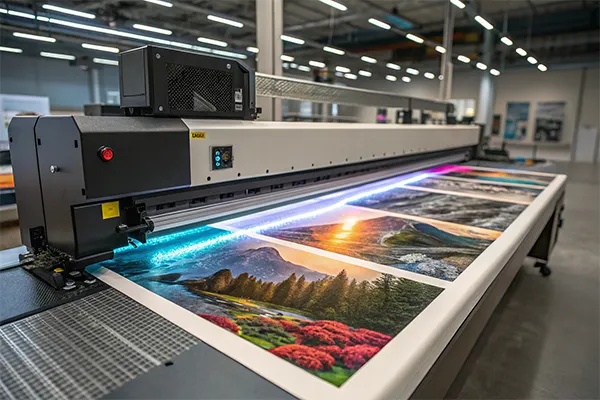
If you’re thinking of investing in a UV flatbed printer, understanding its capabilities and limitations is key. Let’s dive deeper into the specifics of UV printers to help you make an informed decision.
Ink is essential to printing, but what about UV printers? You might be surprised to learn that UV printers have a special kind of ink that sets them apart.
UV printers use a unique type of ink called UV ink. This ink is specially formulated to dry quickly when exposed to UV light, allowing it to print on virtually any material.
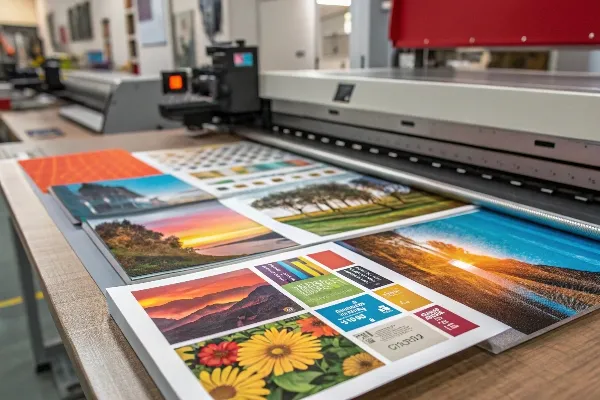
UV printers use specially designed inks that contain photoinitiators, which react to UV light and harden instantly. This gives UV printing its unique ability to print on both flexible and rigid materials such as wood, glass, metal, and plastic. Unlike traditional inkjet printers, which rely on heat or air drying, UV ink is cured by UV light as it’s applied, making the process faster and more versatile. This curing process prevents smudging and ensures a durable print, perfect for items that are frequently handled or exposed to the elements.
Another key advantage is that UV ink is more environmentally friendly compared to traditional inks. It doesn’t emit harmful solvents into the air, making UV printers a greener choice. However, the cost of UV ink can be higher, which is something to consider when calculating your overall expenses.
Lors du choix d'un UV printer, it’s crucial to understand that the type of ink you use directly impacts the quality of your prints. Different materials require different UV inks, so it's important to use the right ink formulation for each application.
Is UV printing a luxury or a cost-effective solution? Many are curious about the costs involved in UV printing. Let’s break down the expenses.
The cost of UV printing depends on the material, ink, and the printer itself. While the upfront costs can be high, UV printing can save money in the long run due to its durability and versatility.

UV printing is generally more expensive than traditional printing methods, especially when you factor in the price of the printer and the specialized UV inks. The printers themselves can range anywhere from a few thousand to tens of thousands of dollars, depending on the size and capabilities. Maintenance and operational costs should also be considered, as UV printers need to be serviced regularly to ensure they operate at peak performance.
However, the higher initial investment can be justified by the longevity and versatility of UV printing. Unlike traditional printing methods, UV prints are highly durable and can withstand the elements, reducing the need for reprints or touch-ups. This longevity can lead to long-term savings, particularly for businesses that need high-quality prints for outdoor or high-traffic environments.
En plus, Impression UV can save on materials. Traditional printing often requires multiple steps or coatings, but UV printing combines these into one process. This can streamline production and reduce material waste.
Overall, while UV printing might seem expensive at first, its efficiency, quality, and durability can offer significant savings over time.
While UV ink has its benefits, it’s not without drawbacks. Let’s take a look at the challenges associated with using UV ink.
UV ink offers many advantages, but it also has some limitations, such as its higher cost and potential environmental concerns due to chemical compositions.
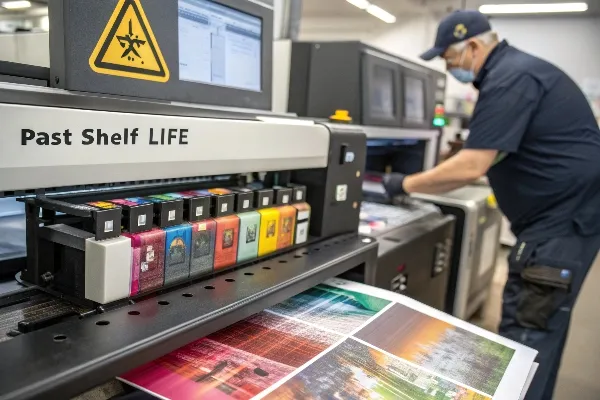
One of the most significant disadvantages of UV ink is its cost. UV ink is more expensive compared to conventional inks due to its unique formulation and the curing process required. This higher cost can add up quickly, especially for high-volume printing operations. Additionally, not all UV inks are created equal, and using lower-quality UV ink can lead to print failures, such as cracking or fading over time.
Another potential downside is the environmental impact. While UV printing is more eco-friendly than some traditional printing methods, UV ink can still contain chemicals that are harmful if not disposed of correctly. The photoinitiators used in UV inks can also be toxic, so proper handling and disposal are important to minimize environmental harm.
UV inks also require a certain level of expertise to work with effectively. Improperly calibrated printers or poor maintenance can lead to inconsistent results, including poor adhesion or incomplete curing, which can affect the quality of the final print.
Despite these drawbacks, UV ink remains a top choice for many industries due to its advantages in terms of speed, versatility, and durability. However, it’s crucial to weigh these benefits against the potential downsides to determine if it’s the right solution for your needs.
How durable are UV printers? Let’s explore the lifespan of these high-tech machines and what you can do to extend their longevity.
With proper maintenance, UV printers can last for several years. Regular servicing and following manufacturer guidelines are essential to keeping your printer in top shape.
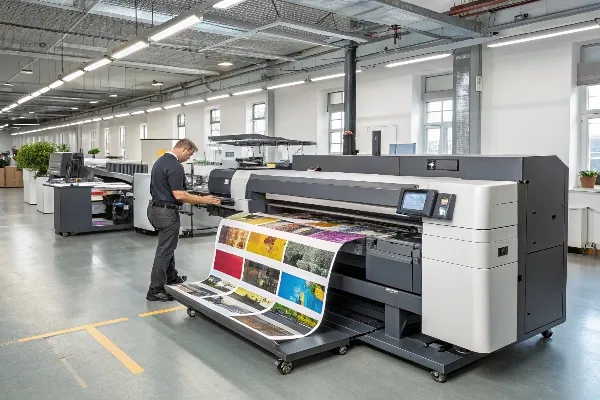
UV printers are designed for long-term use, but like any piece of machinery, their lifespan depends on how well they are maintained. On average, a well-maintained UV printer can last between 5 to 10 years, with some models lasting even longer. Regular cleaning, replacing worn parts, and using the correct inks and materials will help ensure that your UV printer operates efficiently for years to come.
However, it's important to note that the technology within UV printers is constantly advancing. As new features and capabilities are added to newer models, older printers may not be able to keep up. This could limit the printer's ability to meet future demands or offer the same print quality as newer machines.
The type of work the printer is used for also affects its lifespan. Printers used for heavy-duty, high-volume jobs may require more frequent maintenance or replacement of parts than those used for lighter tasks. Therefore, understanding your production needs and how often the printer will be used is crucial when estimating its longevity.
One of the biggest selling points of UV printers is their ability to print on almost anything. But just how versatile are they? Let’s find out.
UV printers can print on a wide variety of materials, including wood, glass, metal, plastic, and more. The versatility makes them ideal for businesses in many industries.
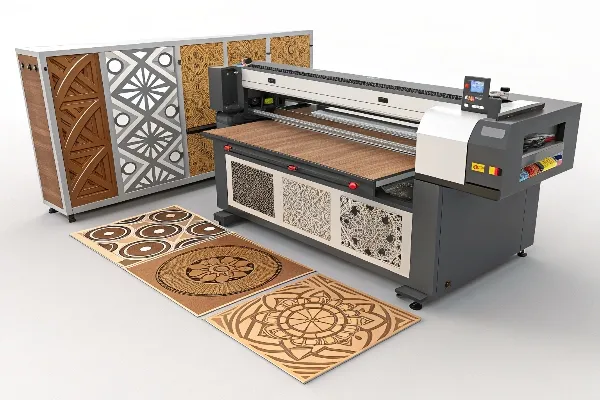
UV printers are known for their incredible versatility. Thanks to their ability to cure ink instantly using UV light, these printers can print on a wide array of materials. Unlike traditional printers that are limited to paper or certain textiles, UV flatbed printers can handle rigid materials like glass, wood, metal, acrylic, and even leather.
This ability to print on virtually any surface makes Imprimantes UV1 an excellent choice for industries such as packaging, signage, promotional products, and custom gifts. For example, you can print vibrant designs directly onto wood for custom furniture pieces or engrave intricate designs on metal for promotional items. This opens up a whole new world of creative possibilities that weren’t available with conventional printing methods.
In addition to printing on a variety of materials, UV printers also offer the ability to print on both flat and three-dimensional objects. Whether it’s printing a logo on a cylindrical bottle or creating custom textures, UV printers can handle it all.
While the polyvalence de l'impression UV2 is a major selling point, it's important to note that not all materials are suitable for UV printing. Some materials may require specific types of UV ink or additional preparation before printing, so it’s important to test and ensure compatibility.
UV flatbed printers are powerful tools that offer a wide range of applications. Their ability to print on various materials and produce durable prints makes them an essential asset for many industries.